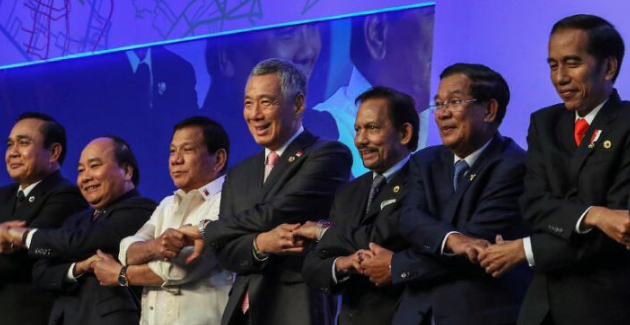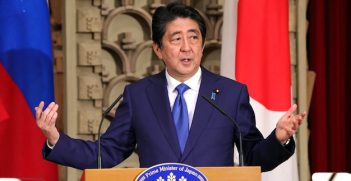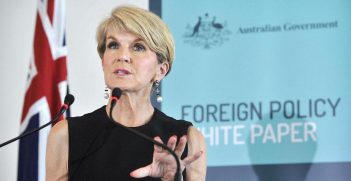Enriching the ASEAN Economic Community

While Western journalists at the 30th ASEAN Summit waited to hear what would be said about disputes in the South China Sea, summit delegates moved ahead with plans to improve small-scale regional trade.
The 30th ASEAN Summit concluded on 29 April 2017. Hosted by the Philippines, this year’s overall theme prioritised ‘Inclusive, Innovation-led Growth’ to enrich the ASEAN Economic Community (AEC). This goal is to be pursued via three measures: increasing trade and investment; integrating micro, small and medium enterprises (MSMEs) into the digital economy; and developing an innovation-driven economy.
The decision to emphasise the roles of MSMEs in propelling the region’s inclusive and innovative growth will be applauded by the business community. MSMEs represent around 99 per cent of all Southeast Asian enterprises, account for 50-90 per cent of domestic employment, contribute 30-50 per cent of regional GDP and produce 20-30 per cent of the region’s exports. If their potential can be fully realised, MSMEs can generate ongoing economic growth and development and provide more employment.
The chairman’s statement emphasised the importance of MSMEs to the economies of ASEAN and urged that this recognition “translate into pro-active steps in line with the Strategic Goals incorporated in the ASEAN Strategic Action Plan for SME Development 2016-2025” (SAPSMED 2025).
Pursuing SAPSMED 2025 is a step in the right direction. The scheme aims at promoting MSMEs’ productivity and innovation, enhancing their market access and access to finance, crafting policy and regulatory frameworks to better promote the enterprises’ interests, and boosting their entrepreneurship.
Another aspect that this year’s summit addressed is the business community’s need to integrate MSMEs into the regional economy via the use of e-commerce. Engaging in e-commerce boosts firms’ competitiveness and enriches regional and global production networks. For instance, greater participation in e-commerce enables a more effective division of labour while providing new opportunities for international partnerships.
These efforts notwithstanding, more work is needed to assist MSMEs and the spread of e-commerce among ASEAN economies. For example, one of the goals outlined by SAPSMED 2025 is to enhance policy and regulatory environment for MSMEs. Two indicators were selected to assess the progress and use as information to shape future decisions. They are:
(1) the time required to start a business; and
(2) the cost of business start-up procedures as a percentage of gross national income per capita.
Yet these two factors fail to capture the realities faced by MSMEs. Illustratively, small firms shipping a few 1.5 cubic-feet boxes of goods are required to fill the same number of customs documents and endure the same screening time as multinational corporations shipping hundreds of 40-foot containers. Clearly, these indicators do not encompass all the costs incurred to MSMEs operating in the region. The set of indicators thus requires revision.
SAPSMED intends to promote “entrepreneurship education”. However, the document fails to define the term or identify the agencies responsible for funding and training these entrepreneurs. Without a clear definition, an effective curriculum cannot be designed. Without identifying the funding and training entities, interested stakeholders do not know how to become involved, which harms the development of MSMEs. Additional details need to be published to bring these education programs to fruition.
Several Southeast Asian states have launched national plans to bolster their digital economies. For instance, the Thai government in February 2016 endorsed the ‘Digital Development Plan for Economy and Society’, which will be implemented over the course of 20 years to transform Thailand into a digital economy. The Philippines rolled out its ‘E-commerce Roadmap 2016-2020’, intended to develop an e-commerce sector that contributes up to a quarter of the country’s GDP by 2020. Indonesia, meanwhile, has put in place plans to turn the country into the largest digital economy in Southeast Asia by 2020.
While the pursuit of such national agendas is to be encouraged, these states must ensure their initiatives align with wider ASEAN schemes if they are to avoid overlapping or conflicting laws and regulations. Otherwise, businesses may find themselves entangled in an e-commerce ‘noodle bowl’ that undermines regional trade and investment.
The 30th summit marked another milestone for ASEAN. It demonstrated the member states’ ongoing commitment to developing the AEC. The summit’s emphasis on MSMEs and e-commerce is good news for many businesses in the region. However, much work still needs to be done in these areas.
Dr Karen Pitakdumrongkit is deputy head and assistant professor at the Centre for Multilateralism Studies at the S. Rajaratnam School of International Studies (RSIS).
This article is published under a Creative Commons Licence and may be republished with attribution.





